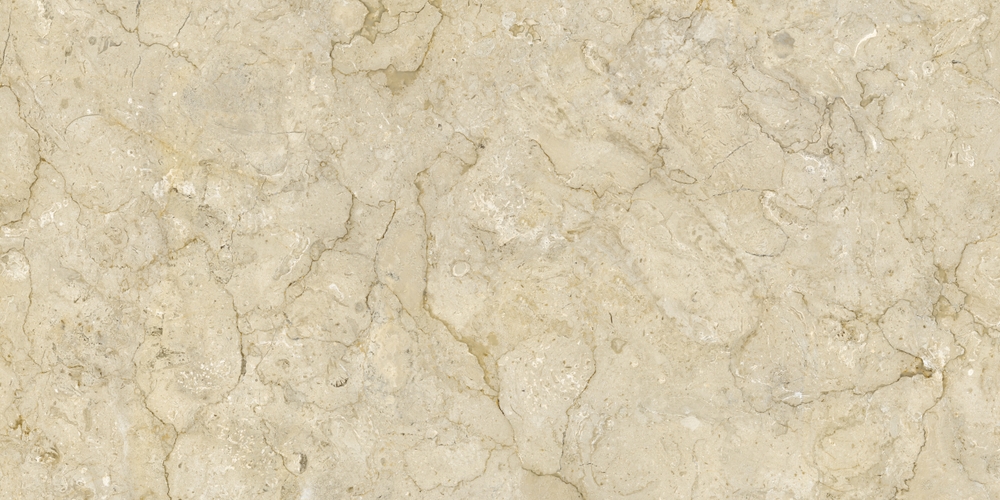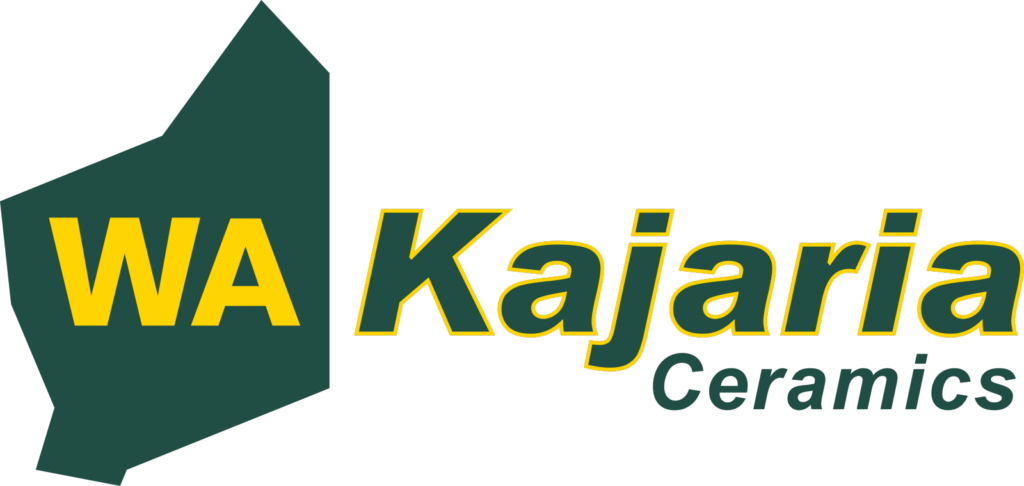Guide to Glazed Vitrified Tiles (GVT) | The Perfect Blend of Style and Strength

Thinking of upgrading your floors or walls? Glazed vitrified tiles (GVT) can just be the game-changer you’re looking for.
These tiles combine the strength of vitrified tiles with a sleek glazed layer which gives them a stunning finish and added durability. Whether you prefer a glossy, high-shine look or a subtle matt texture, GVT tiles offer endless design possibilities.
In this guide, we’ll explore everything you need to know about glazed vitrified tiles; from their manufacturing process and benefits to their different types and sizes
So, let’s explore how these stylish and long-lasting tiles can beautify your space.
What are Glazed Vitrified Tiles?
There are different types of tiles. Such as, ceramic tiles, vitrified tiles, porcelain tiles, digital wall tiles, double-charged, nano-polished tiles, mosaic tiles, and more. But one type that stands out for both style and durability is glazed vitrified tiles (GVT).
GVT tiles are a type of vitrified tile with an added glazed coating on the surface. This glaze enhances their visual appeal. Plus, it adds an extra layer of protection, making them more resistant to stains, scratches, and moisture.
These tiles are crafted by firing a mix of clay, silica, and other minerals at high temperatures, resulting in a dense, low-porosity tile with exceptional durability.
What Does “Vitrified” Mean?
The term vitrified refers to a material that is glass-like.
All ceramics undergo some level of vitrification. Whereas, fully vitrified tiles, also known as porcelain tiles, have a water absorption rate of less than 0.5%. This makes them almost waterproof and extremely strong. But some tiles with higher water absorption; above 6%, are sometimes mistakenly labeled as vitrified. True vitrified tiles are denser, more durable, and mostly don’t need glazing.
Common Types of Glazed Vitrified Tiles
GVT tiles come in two primary finishes, each goes with different aesthetic preferences:
Type | Finish | Best For |
GVT (Digital Glazed Vitrified Tiles) | Matte | A sophisticated, understated look with a soft texture |
PGVT (Polished Glazed Vitrified Tiles) | Glossy | A high-shine, mirror-like surface that adds luxury and elegance |
Both options are available in a wide range of designs, patterns, and colours. Thus, they’ve become a top choice for both homeowners and designers.
How are Glazed Vitrified Tiles Made?
Glazed vitrified tiles (GVT) go through a carefully controlled manufacturing process to achieve their strength, smooth finish, and beautiful patterns.
Glazed Vitrified Tiles Manufacturing | Step-by-Step Process
The production of GVT tiles involves multiple steps. From selecting raw materials to final packaging. Let’s break it down:
1. Selection of Raw Materials
To ensure high-quality tiles, manufacturers use a blend of materials. They all are mixed and processed to form the tile body:
Material | Purpose |
Soda & Potash | Enhances vitrification |
Quartz | Increases strength |
Ball Clay & Talc | Improves workability |
STPP & SLS | Acts as dispersing agents |
2. Tile Formation & Drying
GVT tiles are single-layered and made using hydraulic presses that shape them into perfect forms. After pressing, they pass through vertical or horizontal dryers. Here they are pre-baked to remove moisture.
3. Surface Coating & Digital Printing
A thin layer (less than 1mm) of coating is applied to prepare the tiles for digital printing. High-volume inkjet printing machines create intricate designs and patterns using CMYK colours like cyan, magenta, yellow, and key (black). Printing machines can have 3 to 10 heads, depending on the complexity of the design.
4. High-Temperature Firing
The printed tiles are then baked in a kiln at around 1200°C. This makes them dense, durable, and water-resistant.
5. Polishing & Finishing
If the tile needs a glossy finish, it is polished using lapato abrasives to achieve a shiny and reflective surface. Matte tiles skip this step to retain their natural texture.
6. Cutting & Sizing
To ensure perfect dimensions, tiles go through sizing and squaring machines. These machines trim off excess edges.
7. Packaging & Shipping
Each tile is carefully packed with PP corner straps to prevent damage. For export, wooden pallet packaging is used to protect tiles during transportation.
Glazed Vitrified Tiles Sizes to Suit Every Space
Choosing the right tile size and finish can completely transform the look of your space. Glazed vitrified tiles (GVT) come in a variety of dimensions and surface textures. This allows you to find the perfect match for your home or commercial area.
Available Tile Sizes:
Looking for standard sizes or something more unique? GVT tiles come in a range of sizes to suit different spaces. These versatile size options make GVT tiles a top choice for flooring, walls, and decorative applications.
At WA Kajaria Ceramics, we have following tiles sizes:
Tile Size (mm) | Equivalent in Feet | Best for |
1×2 Feet | Walls & small spaces | |
2×2 Feet | Floors & commercial areas | |
2×4 Feet | Large floors & feature walls | |
– | Wood-look planks for floors & walls | |
– | Spacious interiors & luxury spaces |
Now, let’s explore the key benefits of GVT tiles and why they are a smart investment for your space:
7 Benefits of Glazed Vitrified Tiles (GVT)
1. Exceptional Durability | Built to Last
One of the biggest advantages of glazed vitrified tiles is their exceptional durability. These tiles go through a high-temperature vitrification process. This makes them:
- Highly resistant to wear and tear
- Non-porous and water-resistant
- Resistant to chemicals and stains
Whether it’s for your living room, kitchen, or office, these tiles ensure a long-lasting and low-maintenance flooring solution.
2. Endless Designs & Finishes to Match Any Style
Want a modern, minimalist look or a classic stone finish? With GVT tiles, you get a variety of designs, colours, and textures to suit every style.
Explore Stunning Tile Finishes:
Finish Type | Description & Best Use |
Matt | Subtle, non-reflective look, ideal for modern & elegant interiors. |
Glossy | Bright & shiny surface, perfect for adding a touch of luxury. |
High Glossy | Ultra-sleek, mirror-like finish for a premium feel. |
Carving | Textured surface with intricate patterns for a designer look. |
Sugar | Slightly grainy, giving a soft, refined texture. |
Metallic | Bold & futuristic with a metallic sheen, great for statement walls. |
Wooden | Mimics natural wood, offering warmth and elegance. |
Lapato | Semi-polished, a perfect blend of matte and gloss. |
Rustic | A rugged, natural look for vintage and earthy aesthetics. |
No matter what style you’re going for, there’s a GVT tile finish to match your vision.
3. Waterproof & Stain-Resistant
Thanks to their low water absorption rate (0.5%). Glazed vitrified tiles are a great option for moisture-prone areas like bathrooms, kitchens, and laundry rooms. Here’s why:
- No water damages
- Prevents stains & mold growth
- Keeps spaces fresh and hygienic
4. Versatile for Any Space
One of the biggest benefits of glazed vitrified tiles is their versatility. Be it your living room or bathroom, kitchen or offices, they work beautifully in every setting. Their waterproof and stain-resistant properties make them ideal for moisture-prone areas. Their durability ensures they hold up well in high-traffic zones.
5. Easy to Maintain & Hassle-Free Cleaning
Who doesn’t love a floor that looks great with minimal effort?
Glazed vitrified tiles are super easy to maintain. Perfect for busy homes and commercial spaces. Their smooth, non-porous surface resists stains, scratches, and moisture. So, spills and dirt can be wiped away effortlessly. Additionally, they don’t need sealing or special treatments. Just regular sweeping and mopping will keep them looking brand new.
6. Stylish & Aesthetically Pleasing
Glazed vitrified tiles bring a sleek, polished look that instantly elevates any room. Need high-gloss finishes for a modern vibe? Or you want matte textures for a cozy feel? There’s a design for everyone. With a wide range of colours, patterns, and textures, these tiles can seamlessly blend with any décor.
7. Longevity: A Smart & Durable Investment
If you’re looking for long-lasting flooring, GVT tiles are the way to go. They are a one-time investment that offers long-term value and reliability:
- Glazed surface protects against scratches & stains.
- Perfect for high-traffic areas like offices, malls, and homes.
- Keeps your space looking new for years.
Need glazed vitrified tiles for your project?
Find Premium Glazed Vitrified Tiles at WA Kajaria Ceramics Today
WA Kajaria Ceramics proudly rank as the 7th largest tile manufacturing company in the world.
We offer a wide range of premium glazed vitrified tiles. Including options for both flooring tiles and wall tiles. With over 3,000 styles to choose from. You can buy glazed finish tiles online and pick the tiles of your choice easily.
Call us at 1300 857 568 or (08) 62459918
Shop Glazed Finish Tiles Online Now
FAQs About Glazed Vitrified Tiles
Q1: What’s the difference between ceramic tiles and vitrified tiles?
Vitrified tiles have a built-in glossy finish. Whereas, ceramic tiles need an additional glaze to boost their strength and appearance. The glaze on ceramic tiles adds protection and shine. But vitrified tiles don’t need extra glazing to look great.
Q2: What is the difference between GVT and PGVT tiles??
GVT (glazed vitrified tiles) have a matte finish. Whereas PGVT (polished glazed vitrified tiles) offer a high-gloss finish. Both types are durable. So, your choice will depend on the look you want to achieve.
Q3: How thick are glazed vitrified tiles?
Typically, glazed vitrified tiles range between 10-12 mm thick. This thickness contributes to their strength and longevity which makes them a durable flooring choice.
Q4: Can glazed vitrified tiles be used outdoors?
Yes, these tiles are durable enough for outdoor spaces. But for areas exposed to moisture, it’s important to choose tiles with a slip-resistant surface to ensure safety and longevity.
Q5: Are glazed vitrified tiles good for bathrooms?
Absolutely! Thanks to their water-resistant and non-porous nature. Glazed vitrified tiles are a top choice for bathrooms. Just ensure proper installation to prevent water leakage and enhance their lifespan.
Q6: How long do vitrified tiles last?
Vitrified tiles are built to last around 10-15 years. But they may not outlast marble tiles, which can last 20-25 years with proper care. If a tile chips, though, you’ll need to replace the whole piece.
Q7: Are glazed vitrified tiles pricey?
GTV tiles might cost a bit more than ceramic tiles, but they offer a great value due to their long-lasting durability. They are surely worth the investment. Especially in high-traffic areas or spaces where both strength and style matter.
Q8: Are glazed vitrified tiles slippery?
Glazed vitrified tiles can be slippery when wet. So, it’s important to select a slip-resistant finish for areas like bathrooms or kitchens to ensure safety.
